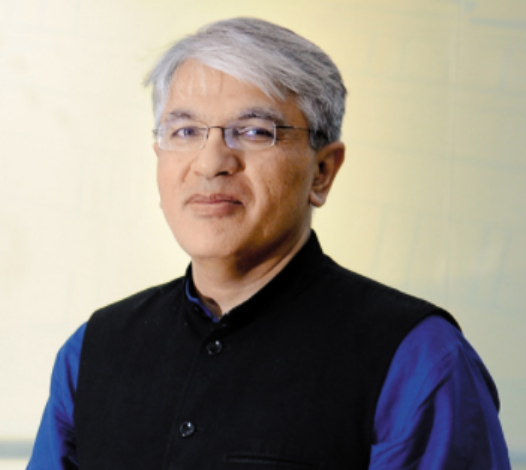3E policy: From more cooks in the kitchen to a different recipe

The contours of an appointment with India’s destiny built on three Es—education, employment and employability—is emerging
Education may be the most important of the 3Es because in the modern world of work, the most important vocational skills are reading, writing and arithmetic and you can’t teach kids in six months what they should have learnt in 12 or 15 years. Photo: Pradeep Gaur/Mint
Philosopher Thomas Paine wrote in Common Sense: “We have it in our power to begin the world over again.” The world of India’s 3Es (education, employment and employability) needed to begin all over again because we have too much informality, too few cities, too little manufacturing, too many farmers, too weak K-12 learning outcomes, too many unemployable graduates, too few apprentices and too much regulatory cholesterol.
Additionally, 3E policymaking needs to make a leap similar to what classical physics made to quantum physics—discrete systems to everything is interconnected—because the job of the government in jobs and skills is not to set things on fire, but create the conditions for spontaneous combustion. In the past two years, this reboot has begun; the report card would be great progress in employment, reasonable progress in employability, and need more boldness in education. Let’s look at all three areas individually.
In employment, we overestimate what policy can do in the short run and underestimate what it can do in the long run. Making India a fertile habitat for jobs needs many interventions; the massive divergence of the past five years between real wages (what employees care about) and nominal wages (what employers care about) in big cities needs the quality urbanization that the Smart Cities programme will create.
Regulatory cholesterol will come down substantially with the replacement of the 27+ numbers for every enterprise with the Unique Enterprise Number from 1 April 2017 and the move to online and paperless labour law compliance (employers currently use 500 crore sheets of paper for this).
As soon as Parliament is ready, 44 labour laws will be consolidated into five labour codes, but action on labour reform has begun with the decentralization of funds, functions and functionaries to state governments. Most importantly, fiscal self-discipline and prudent handling of the oil windfall is creating conditions for macroeconomic stability and lower interest rates that will kick off a job creation cycle by multinationals and domestic entrepreneurs.
Of course, the goods and services tax (GST) has been a miss—my guesstimate is that delays cost us 100,000 formal jobs per month—but hopefully, we will see its unique entrepreneurial upsides later this year.
For decades, the only meritocracies have been the IITs, IIMs and civil service exams, but the churn in nationalized banking, the focus on ease of doing business and the tone of zero tolerance around corruption is changing how business is done in New Delhi by shifting power from connected businessmen with regulatory access to entrepreneurs with nothing other than the sweat of their brow, the strength of their backs and the courage in their hearts.
In employability, the biggest innovation is a new ministry of skills. Skills is a horizontal in a government that is organized vertically; the past decade has seen continuous traffic jams between two central human capital ministries, at the intersection of two central human capital ministries and 19 other central ministries involved in skills, and between the central and state governments. A single neck to catch creates accountability and urgency. The amendment of the Apprentices Act whose reform was the 20th point in Indira Gandhi’s 20-point programme in 1975 is a huge move that enables raising our apprentice numbers from 300,000 to 10 million. State skill missions are being given more room and funds; every state’s opening balance is different and the path dependence needs them to craft their own agendas at the margin.
In education, there is a need for boldness because we are using a scalpel when we need an axe; key agendas lagging are the vocationalization of higher education, creating room for innovation by scrapping regulators who confuse university buildings with building universities and school learning outcomes. Education may be the most important of the 3Es because in the modern world of work, the most important vocational skills are reading, writing and arithmetic and you can’t teach kids in six months what they should have learnt in 12 or 15 years.
More than 1 million youth will join the Indian labour force every month for the next 20 years. A demographic dividend is not people but productive people. India missed her tryst with destiny because of a poor 3E regime; we have 300 million people today who will never read the newspaper they deliver, sit in the car they clean, or send their kids to the school they help build.
The contours of another appointment with India’s destiny built on the more sustainable and scalable tool of 3Es—a job or education changes a life in ways that no subsidy can—is emerging.
India has made another appointment with her destiny and this is one she will keep.
Latest Blogs
Manufacturing Industry Growth in India and Hiring Trends
Hiring for Manufacturing Industry in India India's manufacturing sector is on the cusp of a transformative leap, aiming to bolster its GDP contribution to 25%...
Read MoreNavigating Growth and Challenges in the Indian FMCG Sector in India
Technological Advancements and Digital Transformation: Technology is playing a pivotal role in shaping the future of the FMCG brands in India. From digital marketing and...
Read MoreWorking With a Multigenerational Workforce: Benefits and Challenges
Benefits of a multigenerational workforce Each workforce from a different generation has a unique perspective shaped by their experiences, upbringing, and cultural influences; they bring...
Read MoreGrowth of Hospitality Industry in India 2023 and Prospects for 2024
Surging Opportunities and Hiring Trends in 2024 Fueled by a surge in travel, India experienced a remarkable 50% increase in hiring for tourism and hospitality...
Read MoreTelecom Industry in India: The evolving landscape
Inventory in the Telecom Sector: In the telecom sector, inventory encompasses a range of tangible and intangible assets crucial for operations. This includes physical infrastructure...
Read More





